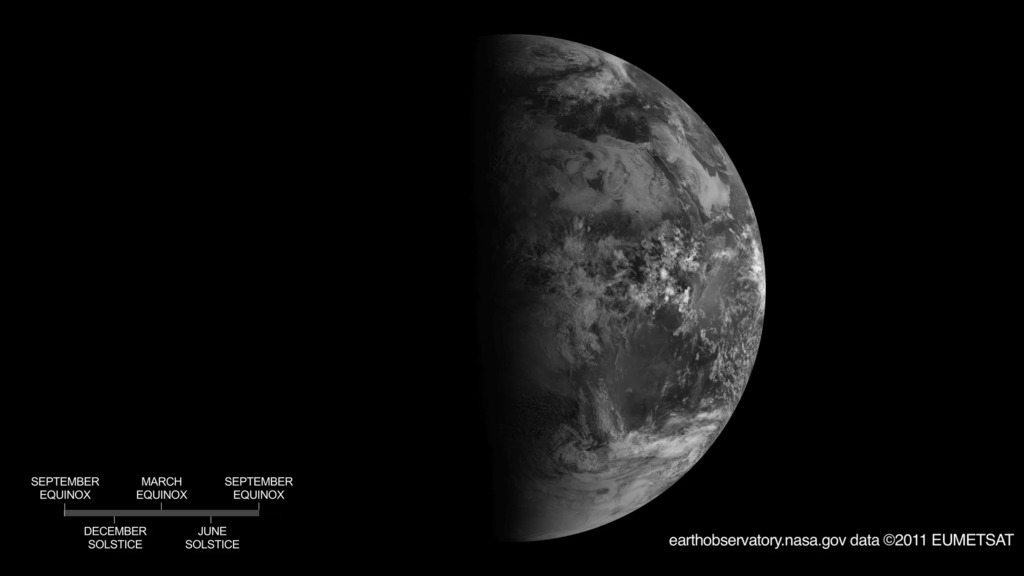Follow The Line
You may think the seasons are caused by a change in the distance between Earth and the sun. In fact, the tilt of Earth on its axis is the most important factor. You can see this from space by watching the movement of Earth’s terminator—the edge between the shadows of nightfall and the sunlight of dusk and dawn. Because Earth spins on a tilted axis, the orientation of this line changes over the course of a year in sync with the seasons. On the September and March equinox, when Earth is at a right angle to the sun, light is spread evenly across the globe and the terminator runs from pole to pole. But on the December and June solstice, when Earth is tilted away from and toward the sun, respectively, light is cast disproportionately on each hemisphere, causing the terminator to appear slanted. Watch the video to view the migration of Earth's terminator across the seasons.

Satellite views of Earth offer a simple way to grasp the reason for the seasons.
See how Earth's terminator changes with the seasons in this time-lapse video assembled from images captured by EUMESAT's Meteosat-9 satellite.

On the September equinox, the terminator is a north-south line, and the sun is said to sit directly above the equator.

On the December solstice, the sun sits above the Tropic of Capricorn, shining more light on the Southern Hemisphere.

On the March equinox, the terminator is a north-south line once again.

On the June solstice, the sun sits above the Tropic of Cancer, casting more light on the Northern Hemisphere.
For More Information
Credits
Please give credit for this item to:
NASA's Earth Observatory
-
Animator
- Robert Simmon (Sigma Space Corporation)
-
Writer
- Adam P. Voiland (Sigma Space Corporation)
Release date
This page was originally published on Thursday, October 31, 2013.
This page was last updated on Wednesday, May 3, 2023 at 1:51 PM EDT.
